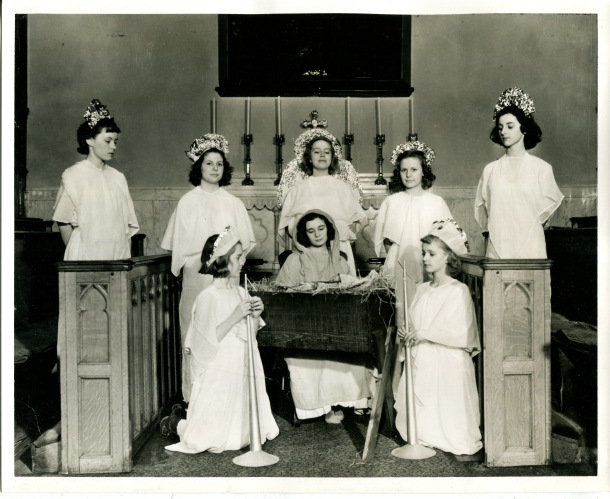Having just turned 15 years old, my mother, Joan, writes in her diary about Christmas, God, and A Christmas Carol in 1937.
Christmas Day! December 25, 1937
Hello! It’s Christmas Day! Isn’t that a lovely word—“Christmas”—the very sound of it makes you think of bright snow and blue stars and shining, laughing things—especially the “Christ” part—the sound of the word is like bright snow or sunlight. The sound of “God” makes you feel strange too. Not like “Christ,” not bright and shining, but like something glowing deep within you. Words—some of them—seem to come from the very heart of men—some bright and some deep within you. Words are terribly beautiful—sometimes.
We just heard Dickens’ Christmas Carol on the radio with Lionel Barrymore as Scrooge.
I was able to find the very Christmas Carol my mother refers to. It was a regular feature with Lionel Barrymore, hosted by Campbell’s Soup and introduced by Orson Welles. You can hear it all right here.
My mother continues to talk about Dickens.
Scrooge is another word that sounds like what it means. Deep and somewhat held in. I wonder if words sound like that because of the associations they bring up or because it’s really in them—not in us.
I’m sitting in the living room now listening to “Silent Night, Holy Night” and looking at our pretty pagan Christmas tree. It comes of course from a Norse pagan custom—but I guess we’re all a little pagan at heart. The tree was supposed to be the symbol of the Nordic or Teutonic nature worship and I rather think all the worshippers have a great deal of the nature god in their hearts. Anyhow, green trees and thick grass and bright growing things get me. Our religion has modified many other religions into itself and that’s what makes us come to it. We can’t get way from what is in us and nature is very close to our hearts, as are the things that have been.
Here, from Berlin about 1930, Silent Night sung by German boys and men.
Joan continues by pondering religion.
I can’t agree with myself on religion. Sometimes I read things that seem to explain it all and then it all seems to be there, but there’s something missing, I know, deep down inside of me. I think if we could understand everything there wouldn’t be any use of living. Things a little beyond are so much more beautiful. Promise is greater than fulfillment. Sometimes I’m afraid when people start to explain things—everything, it seems. But there’s something in me that won’t be explained—and that’s what scares me. And trees and the lake and the sky and rain and—me. I do get scared when I start to think. Momma says I shouldn’t worry about things—but don’t you see—I must—it’s me and I can’t dismiss it because it’s too big for me. And then things attract me that I can’t explain. We’ve got a Buddha on our table and he—just—gets me. It’s very soothing to look at him—so of course he can’t be wrong. I wonder if anything is.
My mom, Joan, concludes:
But Christmas and songs make you feel very believing in beautiful things and very sure about right and wrong. But the wondering is still there—I’m not sure about me.










